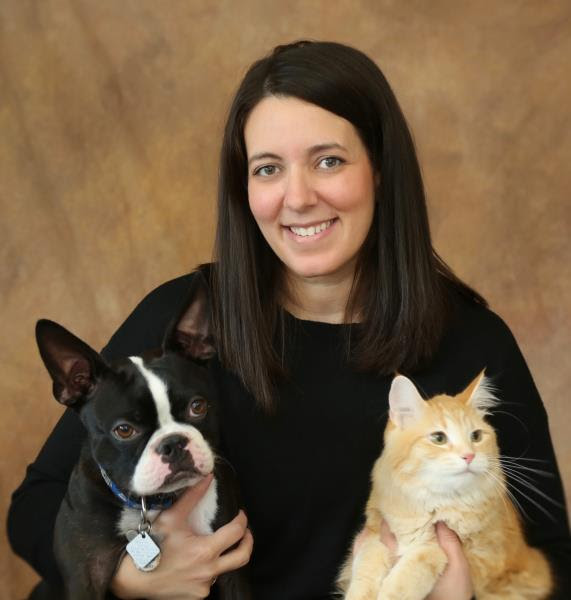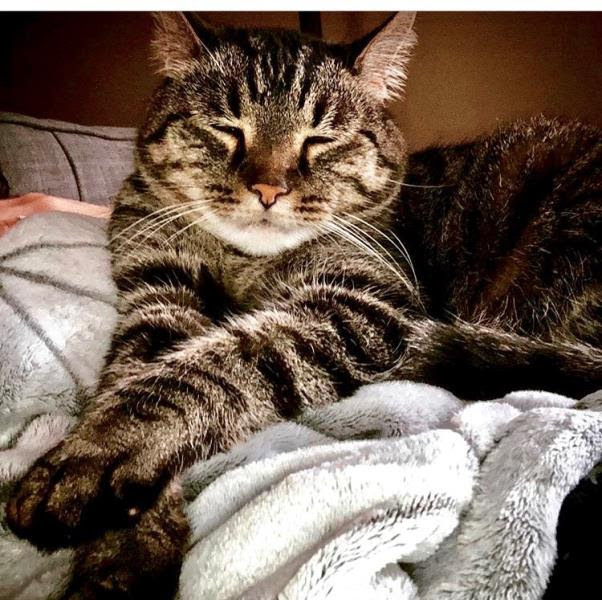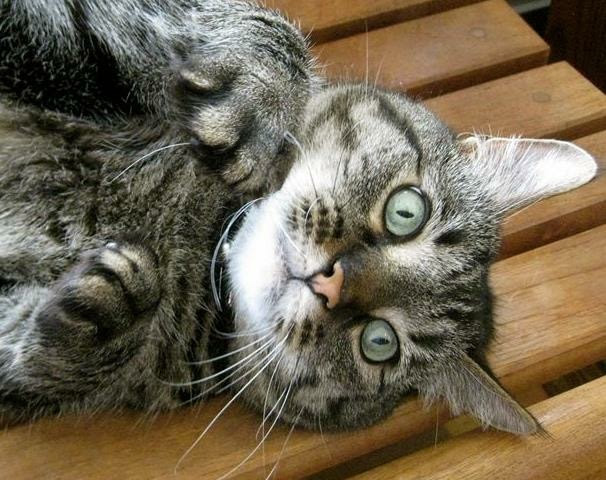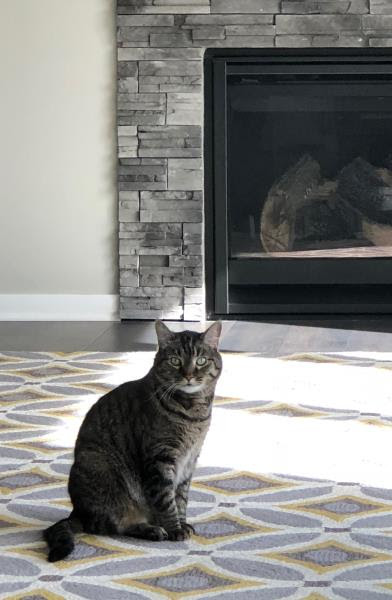Happy Halloween: Beware of Chocolate Toxicity
Most people enjoy chocolate, and not surprisingly, most pets do too! Unfortunately, chocolate can be toxic to pets and can lead to severe clinical signs including vomiting, diarrhea, restlessness, hyperactivity, tremors, seizures, ataxia (‘drunkenness’), increased heart rate, heart arrhythmias, increased blood pressure, increased body temperature, difficulty breathing, and even death.
The toxic compounds in chocolate are methylxanthines – this includes both theobromine and caffeine. These compounds inhibit cellular receptors, stimulate the central nervous system, and enhance cardiac and skeletal muscle contractility. In addition, the high fat content in chocolate leads to local gastrointestinal irritation (vomiting and diarrhea), and in severe cases, a serious disease called pancreatitis. Clinical signs occur within 12 hours, but most pets will begin exhibiting signs within 1-4 hours of ingestion.
Different types of chocolate have different amounts of theobromine and caffeine. Relative amounts of methylxanthines in chocolate are as follows:
|
Compound
|
Theobromine (mg/oz)
|
Caffeine (mg/oz)
|
|
|
|
|
|
White chocolate
|
0.25
|
0.85
|
|
Milk chocolate
|
58
|
6
|
|
Dark chocolate
|
130
|
20
|
|
Semi-sweet chocolate
|
138
|
22
|
|
Baker’s unsweetened chocolate
|
393
|
47
|
|
Dry cocoa powder
|
737
|
70
|
While we generally consider 100 mg/kg to be a toxic dose, some patients will exhibit clinical signs at a dose as low as 20 mg/kg. However, often, we don’t know the type or amount of chocolate that was ingested, so it is best to proceed as if the ingestion was the worst-case scenario.
Treatment depends on the amount of methylxanthines ingested, the time of ingestion, and the patient’s clinical signs. If recent ingestion occurred, vomiting is induced to evacuate the stomach. In severe cases, sedation and gastric lavage with a stomach tube may be performed to evacuate the stomach contents. Activated charcoal is administered to bind the toxins in the gastrointestinal tract. Fluid therapy, anti-vomiting medications, gastrointestinal protectants, and a bland diet may be prescribed. In severe cases, patients require intensive care including intravenous fluid therapy, continuous EKG monitoring, oxygen support, urinary catheterization, and intravenous medications to manage seizures, cardiac arrhythmias, and abnormal respirations.
If treated promptly, most patients with chocolate toxicity recover, but it is important to understand that chocolate ingestion can lead to severe complications and even death. It is best to avoid chocolate ingestion in your pet. During the holidays (Halloween, Valentine’s Day, and Easter) when chocolate is abundant, make sure it is kept out of reach of your pet. If you suspect ingestion, contact your veterinarian immediately.
Employee Spotlight: Molly Moy, Practice Manager
Each month, we will spotlight one of our team members in order of years of service at St. Francis Animal Hospital.
After graduating from Globe College in 2002, Molly joined St. Francis Animal Hospital as a Veterinary Assistant. She was promoted to Veterinary Technician in 2004 and Office Manager in 2006. In 2010, she became St Francis’ first Veterinary Practice Manager.
Molly manages all aspects of St Francis including employee management and training, human resources, information technology (IT), regulatory management, accounts payable, accounts receivable, marketing, social media, financial management, public relations and community involvement.
In addition, she serves as one of our most experienced technicians. We can always count on her to place the difficult catheter or fix the broken dental or lab equipment.

She is a member of the national WellMP Management Group for veterinary practice management as well as the Greater South Veterinary Practice Management Network (VMPN). She was recently named 2018 MN VPMN Practice Manager of the Year. She is currently working towards her Certified Veterinary Practice Manager (CVMP) certification.
She shares a home with her husband, Chad; daughters Ellie and Mia; two cats, Angus and Eugene; two guinea pigs, Pickle and George; a Betta Fish, Rainbow Legs; and her Boston Terrier, Chibs.
Why do you love being a veterinary technician and practice manager?
I obviously have always had a love for animals and their well-being, but more than that, I enjoy educating and building relationships with our patients and clients that help strengthen the human-animal bond.
Why do you love working at St. Francis Animal Hospital?
I love working at St. Francis because of our dedication to high quality patient and client care. I enjoy taking the time to listen, answer questions, and build the trust that develops lifelong relationships.
Happy Birthday, Tobias Matthew!

Tobias Matthew turns 13 years old on October 31st. Toby lived at St. Francis Animal Hospital for many years, serving as our clinic mascot and doing important jobs like greeting clients and providing pilling demonstrations. Last year, he officially retired.

We reached out to him to find out what feline retirement is all about. Thank you to Kelly Wessels, CVT for providing the update and photos.
Hello everyone! Life in retirement is where it is at! My humans are sure spoiling me. I have more toys and cat nip than I know what to do with.

At night, I race around and enjoy playing with them all. (I try to keep the humans awake for as long as possible.) Some of my favorite things to do are watching wildlife from the windows and hanging out by the fireplace. My life sure has changed. As much as I loved my life at St Francis, I do love being retired. I have even turned into a lap cat and love to be snuggled. To follow my adventures check out my Instagram page: stfrancisabh.”
Happy Birthday, Toby! We all miss your purring and crazy antics at St Francis but wish you a life full of love, happiness, sleep, and catnip!
News Briefs
Vote Now: Neighborhood Favorite
Nextdoor.com‘s Neighborhood Favorites 2018 voting is through October 31st!
Please take a moment to take their survey and recommend us in the veterinarian category. All of us at St. Francis are so thankful for our community’s continued support!
Congratulations, Patricia Novak, DVM, CHPV
Dr. Patricia Novak recently completed her certification in Hospice & Palliative Care (CHPV) through the International Association of Animal Hospice and Palliative Care. She is excited to add this area of expertise to the services provided at St Francis.
Flea & Tick Preventative For Your Pet
Don’t forget to continue your flea & tick preventative (Frontline Gold or Nexgard) throughout the fall months. We have continued to see a lot of patients with fleas and ticks this fall. Based on your pet’s lifestyle, year round preventative may be recommended.
Thank you to Laura Berg, CVT, Director of Preventative Care Services.
Image Credit: dezy | Shutterstock

